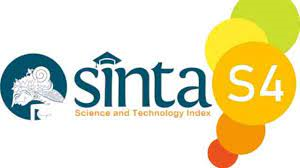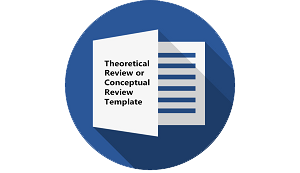Sociocultural Aspects of Transgender Slang
DOI:
https://doi.org/10.30957/ijoltl.v6i3.680Keywords:
slang language, transgenders, socioculturalAbstract
This study examines the sociocultural aspects of waria’s slang. Considering the current problems, the descriptive method was used to describe the results of this study. The object of this study is the various language used by transgenders in their daily communication. The data were collected, categorized, analyzed, and the results were presented in the form of a description along with examples. Sociocultural aspects that exist in waria’s slang can be the sociological, sociolinguistics, as well as cultural aspects of the slang emergence among transgenders. Sociological aspects include the use of slang among transgenders inclusively. Those aspects are the use of speech units in the form of words, phrases, sentences, and discourses. Furthermore, the establishments of waria’s slang are as follows: the sounds game, permutation, a play, replacements, additions, acronyms, and analogies. While the cultural aspects include waria’s slang function within the culture among the society members, which for: humoring, bullying, unifying, and as a communication tool.
Downloads
References
Amir, K. (2017). Gender Analysis on Slang Language in Students Daily Conversation. ETERNAL (English, Teaching, Learning, and Research Journal), 3(2), 229-243.
Anderson, Lars. & Trudgill. (1990). Bad Language, Oxford: Basic Blackwell Ltd.
Blount, B. G., & Sanches, M. (Eds.). (2014). Sociocultural dimensions of language change. Elsevier.
Braber, N., & Jansen, S. (Eds.). (2018). Sociolinguistics in England. Springer.
De Vogelaer, G., & Katerbow, M. (Eds.). (2017). Acquiring sociolinguistic variation (Vol. 20). John Benjamins Publishing Company.
Ediati, A., Maharani, N., & Utari, A. (2016). Sociocultural aspects of disorders of sex development. Birth Defects Research Part C: Embryo Today: Reviews, 108(4), 380-383.
Habyarimana, H., Ntakirutimana, E., & Barnes, L. (2017). A Sociolinguistic Analysis of Code-Switching in Rwanda. Language Matters, 48(3), 49-72.
He, Y., Fatahalian, K., & Foley, T. (2018). Slang: language mechanisms for extensible real-time shading systems. ACM Transactions on Graphics (TOG), 37(4), 1-13.
Heller, M. (2020). Sociolinguistic frontiers: Emancipation and equality. International Journal of the Sociology of Language, 2020(263), 121-126.
Holmes, J. (2018). Sociolinguistics vs pragmatics. Pragmatics and its Interfaces, 294, 11.
Kleinschmidt, D. F., Weatherholtz, K., & Florian Jaeger, T. (2018). Sociolinguistic perception as inference under uncertainty. Topics in cognitive science, 10(4), 818-834.
MacSwan, J. (2019). Sociolinguistic and linguistic foundations of codeswitching research. In Codeswitching in the Classroom (pp. 3-38). Routledge.
Poedjoedarmo, Soepomo. (1984). Pengantar Sosiolinguistik. Yogyakarta: Laporan Penelitian UGM, Lembaga Kajian Kebudayaan.
Purnama, Karyono. (1983) Slang Bahasa Melayu Brunei, Makalah untuk Simposium Internasional Ilmu-Ilmu Humaniora II Bidang Sejarah dan Linguistik, Yogyakarta: FS UGM Yogyakarta.
Rahayu, Siti Perdi. (1996). Slang dalam Bahasa Jawa, Analisis Kasus di Mal Malioboro Yogyakarta, Yogyakarta: Pasca Sarjana Universitas Gadjah Mada.
Rampton, B. (2019). Interactional sociolinguistics. In The Routledge handbook of linguistic ethnography (pp. 13-27). Routledge.
Rodriguez-Ordonez, I. (2019). The Role of Linguistic Ideologies in Language Contact Situations. Language and Linguistics Compass, 13(10), 213-229.
Saliyeva, D. O. (2021). Etymology of Slang: Its Origin and Definition. Web of Scholar, 7(6), 22-25.
Samatboyeva, M. (2021). The Sotsiolects of English and Uzbek Language (Argot, Jargon and Slang). In ДОСТИЖЕÐИЯ ВУЗОВСКОЙ ÐÐУКИ 2021 (pp. 239-244).
Shivakumar, S. T. (2016). Aspects impeding affirmative practices and comparison of multi-dimensional gender/consciousness of transgenders. International Journal of Psychology, 51, 997.
Smakman, D., & Heinrich, P. (Eds.). (2017). Urban sociolinguistics: The city as a linguistic process and experience. Routledge.
Spears, Richard A.. (1981). Slang and Euphemisme, New York: Jonathan Davis Publishers Inc.
Svendsen, B. A. (2018). The dynamics of citizen sociolinguistics. Journal of Sociolinguistics, 22(2), 137-160.
Swan, J., & Deumert, A. (2018). Sociolinguistics and Language Creativity. Language Sciences, 65, 1-8. DOI: https://doi.org/10.1016/j.langsci.2017.06.002.
Trimastuti, W. (2017). An analysis of slang words used in social media. Jurnal Dimensi Pendidikan dan Pembelajaran, 5(2), 64-68.
Zhang, Y & Wildemuth, B. M. (2009). Qualitative Analysis of Content, In: B. M. Wildemuth, Ed., Applications of Social Research Methods to Questions in Information and Library Science, Libraries Unlimited, 2009. pp. 1-12.
Downloads
Published
How to Cite
Issue
Section
License
Authors who publish with this journal agree to the following terms:
- Authors retain copyright and grant the journal right of first publication with the work simultaneously licensed under a Creative Commons Attribution-ShareAlike 4.0 International License that allows others to share the work with an acknowledgement of the work's authorship and initial publication in this journal.
- Authors are able to enter into separate, additional contractual arrangements for the non-exclusive distribution of the journal's published version of the work (e.g., post it to an institutional repository or publish it in a book), with an acknowledgement of its initial publication in this journal.
- Authors are permitted and encouraged to post their work online (e.g., in institutional repositories or on their website) prior to and during the submission process, as it can lead to productive exchanges, as well as earlier and greater citation of published work (See The Effect of Open Access).












